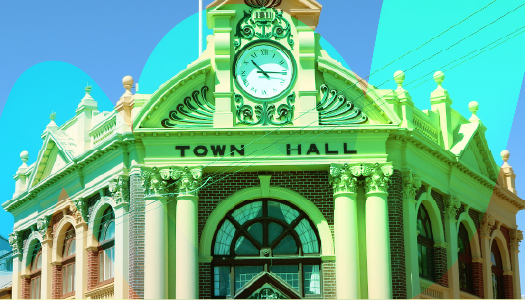Benefits of Ports Australia’s updated condition assessment manual for marine & coastal assets
The Wharf Structures Condition Assessment Manual (WSCAM) was developed in 2014 by Ports Australia after identifying a need for a consistent, repeatable approach to the inspection and condition assessment of wharf structures by coastal and port asset operators. Since then, the manual has become widely recognised as a best-practice methodology by the Australian ports industry and gained a following across the world.
WSCAM is the industry’s most recognised tool for providing consistency with inspections when conducted by different people, and for providing guidance around what a specific condition rating might look like. While the original version targeted ports and their wharf structures, the manual has more recently been adopted by engineering firms, local councils and state government departments to help maintain other marine-related structures such as wharves, piers, jetties, walkways, breakwaters, revetments, embankments and other fixed assets.
Its expanded popularity prompted Ports Australia to release an updated version of WSCAM in November 2022 after gathering feedback from a range of asset owners, inspectors and industry experts including Brightly. Key updates to the latest manual include:
- A greater scope including all port fixed structures, excluding buildings
- A single assessment tool for inspections that’s flexible for user customisation
- Guidance on a risk approach to determine the frequency of inspections
- Adding more construction materials given the changes in material types within ports and maritime structures
- Adding recent advancements in technology, such as inspection robots, drones, remote sensing, mobility, digital twins and AI
Let’s take a deeper look at the latest version of WSCAM and how it can help with the marine and coastal asset inspection process.
The WSCAM approach to marine and coastal asset inspections
The inspection of assets is usually carried out by a whole host of people at different times—sometimes employees and sometimes external consultants. It’s not uncommon to have 10 inspectors assess the same structure, resulting in slightly different assessments depending on each inspector’s experience and expertise.
With example imagery and formulae for calculations, WSCAM provides consistency in inspection outcomes across different asset types, regardless of who actually does them. It not only ensures greater accuracy in the data but also prevents operators from being locked into using any one inspector for the data to be reliable.
A reliable classification scale
The most important feature of WSCAM is that it provides guidance to inspectors as to what a specifical condition rating would look like. A common problem is the lack of consistency in rating scales in asset reports. One year, they may use a condition scale of 1-5; five years later it’s a scale of 1-10. In this situation, it just isn’t possible to find out where your assets truly are on the curve unless you spend an awful lot of effort.
WSCAM helps you stick with a classification scale so that everyone knows what the lowest and highest numbers mean, and that the data in the system truly reflects what’s out in the field. What’s more, it helps organisations be more sustainable by keeping existing assets functioning for longer and therefore avoiding unnecessary replacements.
Scoping, preparation, inspection and analysis
Let’s look at the four stages of condition assessments—scoping, preparation, inspection and analysis—to see how WSCAM breaks down the process to help operators track the condition of individual asset elements over time.
Scoping structural assessments
First, operators need to consider what sort of structural assessment is needed. WSCAM splits the scoping of structural assessments into seven different common types of inspections and one specialised inspection category:
- Baseline inspections – For new assets, making sure they meet the requirements of the contract
- Periodic visual inspections – When looking for damage or things that are unusual
- Detailed investigation inspections – In-depth inspections by a team of people or a third party
- Inspections for design purposes – When repurposing an asset for a different job, to understand what condition the asset is in to ensure it will perform the new job effectively
- Post-event inspections – If there has been an incident such as a fire or the asset has been damaged
- Due diligence inspections – For the purpose of insurance renewals or if you are selling off an asset
- Special purpose inspections – For anything and everything, usually done for a very specific purpose
Preparing with structure componentisation
After you've completed the scoping, you then must prepare your information. This is where componentisation comes in. WSCAM recommends listing each component and construction material for each asset type to track their condition over time. This ensures that everyone can follow the same level of detail each time an inspection is carried out.
Carrying out the inspection
You will need to decide whether it’s going to be an in-person inspection (e.g., someone going underneath the water) or if you are going to use technology such as a submersible drone—and how you will collect the data. If doing an in-person inspection, WSCAM says it’s important to recognise that there could be health and safety risks, interruptions to operations and unexpected costs. There are many types of technology available to help safely carry out inspections and in many cases, it’s a far better outcome. Another issue is ensuring that the person doing the inspection has the right qualifications to do so. A different set of qualifications is required to do a detailed inspection versus a periodic inspection and may also require different tools.
Data analysis & management
There are many ways to present your outcomes. WSCAM suggests you can present it by colour, targeting each individual component so that you can see where the red areas are that require attention. You can also look at the entire structure and understand the impact of upgrading one component on the rest of the asset structure. Digital twin technology can be useful here—where a digital version of an asset is created to help predict maintenance issues or test out scenarios.
Make better decisions by connecting WSCAM data into Brightly Predictor
The Predictor platform enables port infrastructure custodians to reliably model and predict the future behaviour of Ports Australia’s asset infrastructure, such as wharves, roads, railways, navigation aids, structures and services. Predictor’s scenario modelling outputs help to drive informed decision-making ensuring Ports Australia can optimise their future capital investment programs by directing capital spend to the most appropriate assets at the right time, whether based upon criticality, obsolescence, climate change or WSCAM condition ratings.
Ports Australia says the holy grail is being able to predict when an asset is going to drop below a certain service level. That is what WSCAM is all about—helping operators track each component and its condition over time in a repeatable, consistent way to obtain more accurate data for greater predictive insights. Ports Australia’s advice to any operator looking to start their journey with WSCAM is to take it slowly—pick a couple of assets and have a go at applying the recommendations. Once you figure out how it will work within your systems, it becomes a lot easier to roll out across your marine or coastal asset portfolio.
To purchase an electronic version of WSCAM, visit Ports Australia's website.



